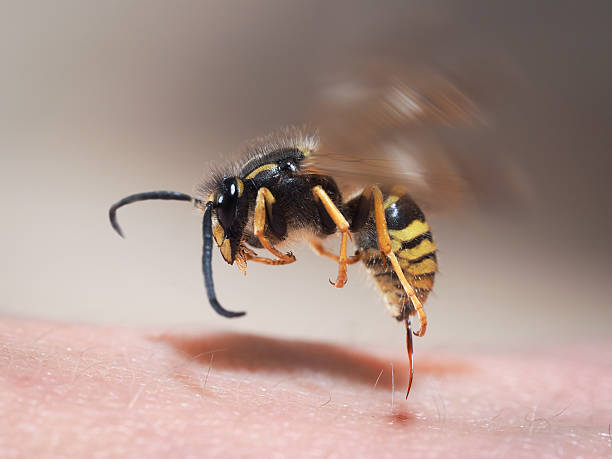All About Wasps
Wasps are a diverse group of insects, with approximately 30,000 identified species. They play a crucial role in controlling pest populations and are important pollinators. While social wasps can be aggressive, the majority of wasps are solitary and do not sting. Understanding wasps and their behaviors can help manage their presence around your home.
What are Wasps?
Wasps belong to the order Hymenoptera. They are characterized by their slender, smooth bodies and relatively few hairs. They can be predatory or parasitic, and they have stingers with few barbs that can be removed easily. Wasps have biting mouthparts and antennae with 12 or 13 segments. Most are winged, and only female wasps have a sting.
Wasps are diverse, with a range of behaviors and habitats. Social wasps live in colonies with complex social structures, while solitary wasps build individual nests. They contribute significantly to ecosystems through their predatory and pollination roles.
How to Identify Wasps
Appearance:
- Body Structure: Slender, smooth body and legs with relatively few hairs
- Behavior: Predatory or parasitic
- Stinger: Few barbs, can be removed easily from victims
- Mouthparts: Biting
- Antennae: 12 or 13 segments
- Wings: Normally winged
- Females: Only females have a sting
Similar Pests: Distinguish wasps from bees by their pointed lower abdomen and narrow “waist” (petiole) separating the abdomen from the thorax.
Activity and Seasonality
Active Seasons: Wasps are most active in the warmer months, particularly from late spring through fall.
Lifecycle: Social wasp colonies die off in winter, except for newly fertilized queens that hibernate and restart the colony in spring. Solitary wasps may have one or multiple generations per year.
Where to Find Wasps in or Around Your House
Common Habitats: Wasps can be found in various locations including underground burrows, nests in trees, and man-made structures.
Specific Hiding Spots: Look for nests in eaves, under playground equipment, or in pavement cracks. Solitary wasps may nest in wood, pithy plant stems, or in the ground.
How to Get Rid of Wasps
Immediate Action:
- For visible nests, use caution and avoid disturbing them.
- Block potential entry points and avoid attracting them with food.
Professional Treatments:
- Contact Pest Control Consultants for expert removal and treatment options.
- Professionals can handle nests and provide long-term solutions.
DIY Methods:
- Use wasp sprays or traps available in stores.
- For small infestations, carefully remove nests at night when wasps are less active.
How to Prevent Wasps
Preventive Measures:
- Seal cracks and crevices around your home
- Install screens on windows and vents
- Keep outdoor areas clean and free of food scraps
Home Maintenance:
- Regularly inspect and maintain roof and siding
- Remove any old nests or hives from previous seasons
- Trim back overgrown plants and shrubs near the home
Long-term Strategies:
- Use bee repellents around potential nesting sites
- Consider installing bee-proof barriers in high-risk areas
- Maintain a well-kept yard with minimal flowering plants near entry points
Professional Assistance:
- Contact Pest Control Consultants for expert advice and services.
Conclusion
Wasps, while sometimes feared, are important for their roles in pest control and pollination. Understanding their behaviors and prevention methods can help manage their presence effectively.
If you’re dealing with a wasp infestation, contact Pest Control Consultants today for a free consultation and effective treatment plan.
